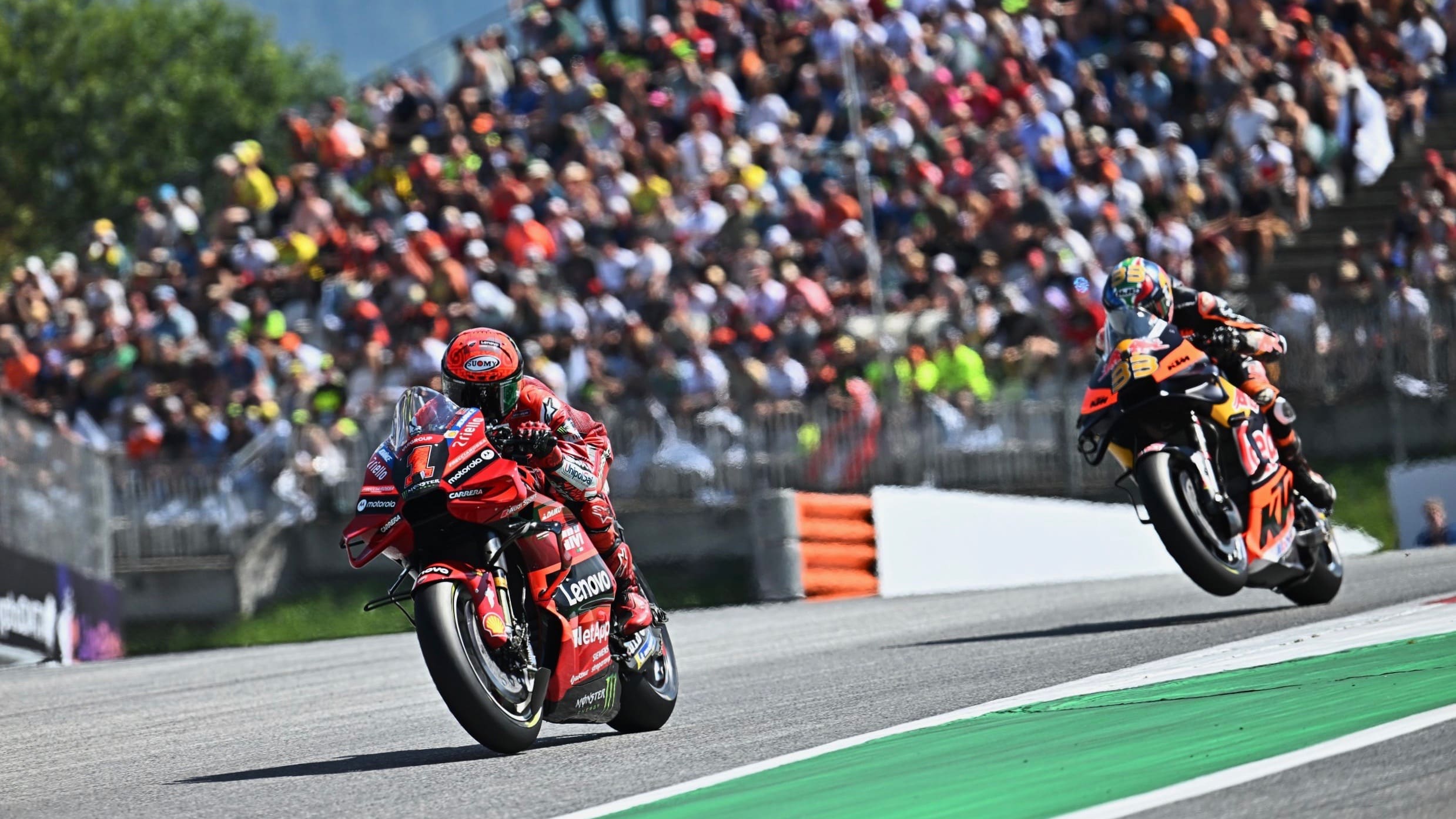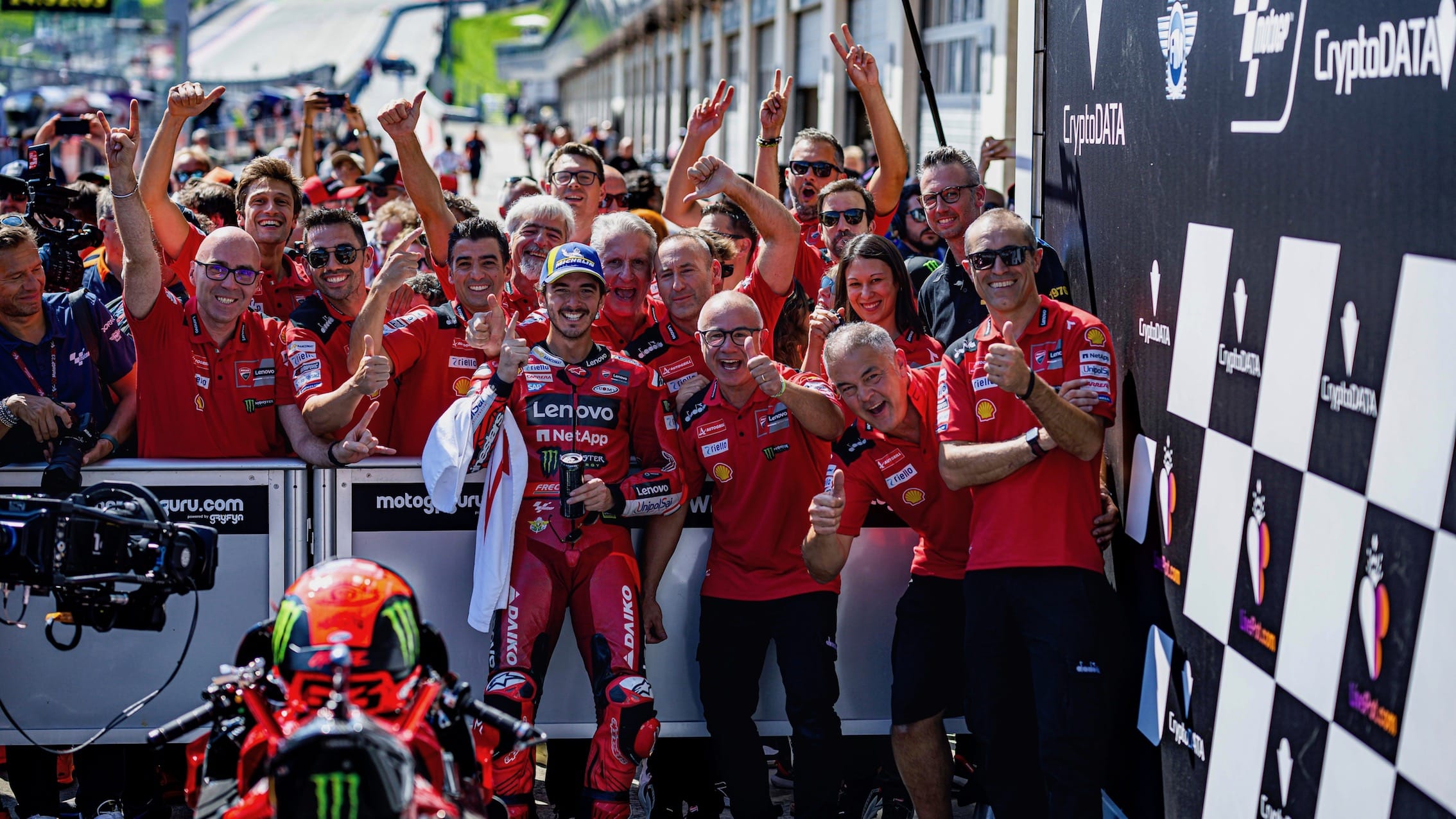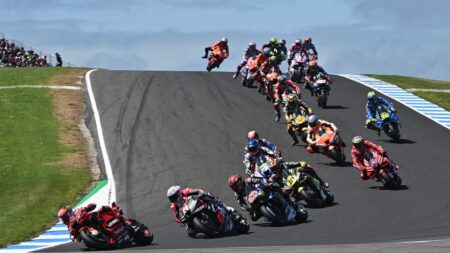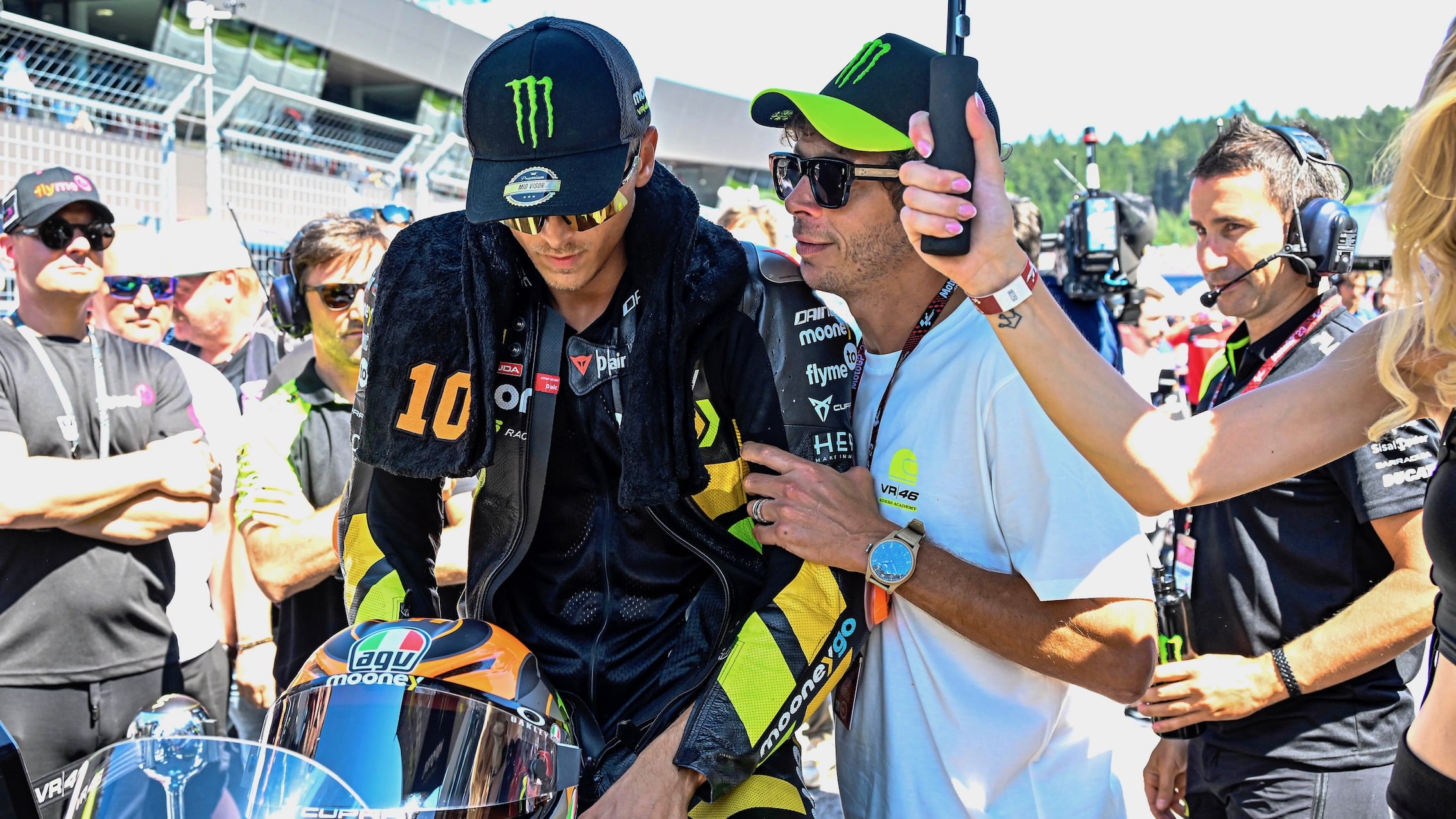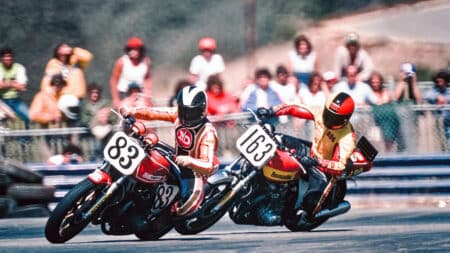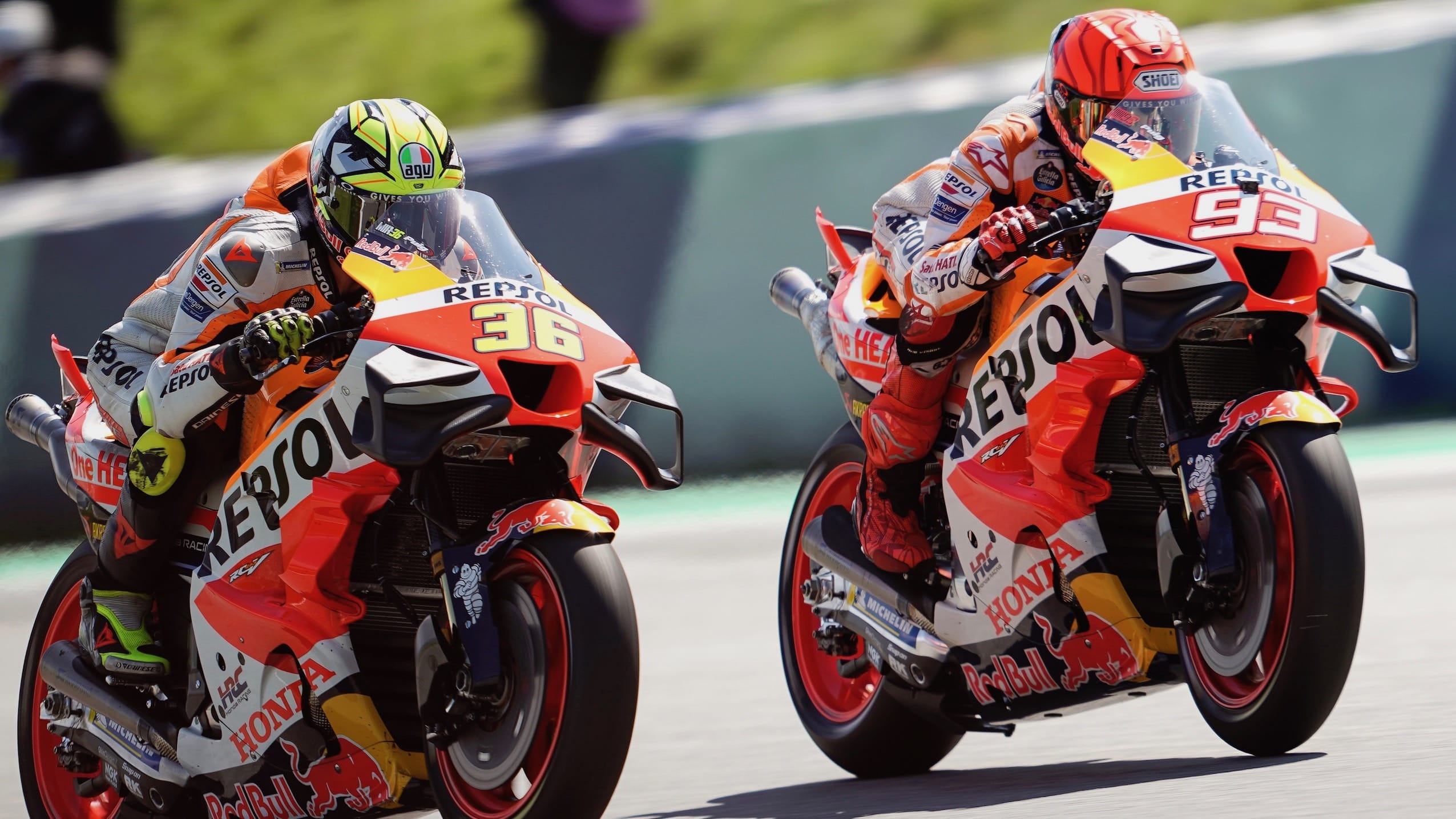I surely don’t need to tell you that this is not an easy thing to do. More than ever, riders must use both tyres to stop the bike, making sure not to overload the front during straight-line braking, then slightly skidding the rear to destress the front as they tip into the corner, so they’re on a knife edge all the time, even though it may not look it.
Bagnaia’s Red Bull Ring disappearing act was reminiscent of Jorge Lorenzo in his pomp, which is no coincidence because Lorenzo also rode that knife edge, using a similar style of super-late braking, then throwing the bike into the corner at devastating speed and using lots of mid-corner speed, so when he opens the throttle he stresses the rear tyre less, because he’s already carrying lots of speed.
This was particularly crucial at Red Bull Ring, where Michelin equips riders with a harder-casing rear tyre to cope with the layout’s many brutal low-gear acceleration zones.
Bagnaia was therefore gentler than ever with the throttle for two reasons.
First, to avoid wheelspin as he rode out of corners, which would destroy the rear tyre.
Second, because not only does the Austrian track murder rear tyres it also makes engines drink fuel, so he was saving every drop.
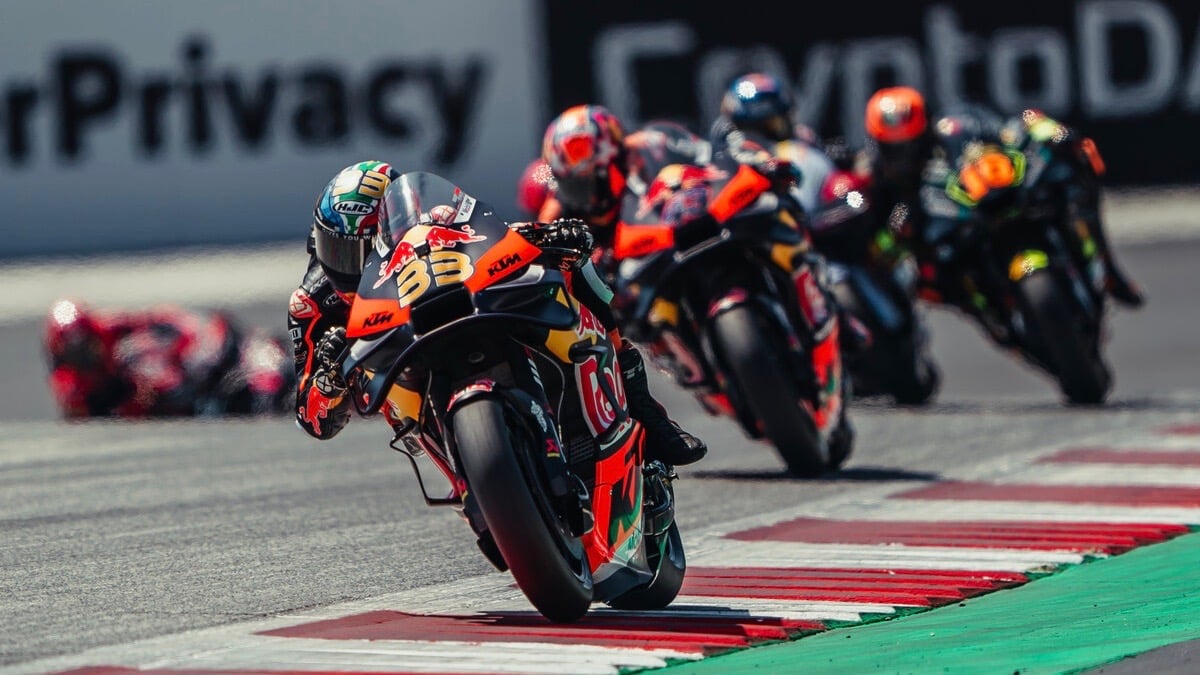
Binder chases Bagnaia in the early stages of the GP, followed by team-mate Jack Miller, Luca Marini and Alex Marquez
KTM
“That’s why my sighting lap was very, very slow,” said the 25-year-old Italian, who set new lap and race records. “I put the bike into neutral on the downhill run towards Turn 4 and I stopped the engine exiting the last corner, arriving to the grid very slow.”
Bagnaia didn’t leave the grid very slow, getting both holeshots, showing that Ducati has found something significant in its launch performance, easily beating Binder to Turn 1. So the KTM is no longer MotoGP’s fastest bullet from a gun.
I did ask Dall’Igna what Ducati had done to regain its starting advantage, but he just grinned and ate a celebratory bombolini Italian doughnut. Further investigation suggests a revised holeshot device (there’s a new trigger in the Desmosedici’s fairing) and almost certainly other detail changes.
“It helps me in the first part of acceleration, which is where I was losing [to the KTMs],” Bagnaia explained. “Thanks to my starts I had a great chance to win both races.”
Bagnaia rode his fastest lap of the GP on lap three and by half-distance he was more than a second ahead of Binder, which gave him the luxury of shifting gears at lower rpm to save fuel.
There was no such luxury for Binder. He was within half a second of the No1 Ducati for the quarter of the race, which was both good and bad. Good, because staying in Bagnaia’s draft saved him fuel. Bad because the oven-like blast from the 300-horsepower Desmosedici and the high track temperatures cooked his front tyre.
“Four or five laps in, the front started locking,” explained Binder. “You get the first warning, a floating feeling from the front tyre, but I kept pushing and lost the front a few times. Then you think, ‘We know how this ends…’, so you have to be clever.
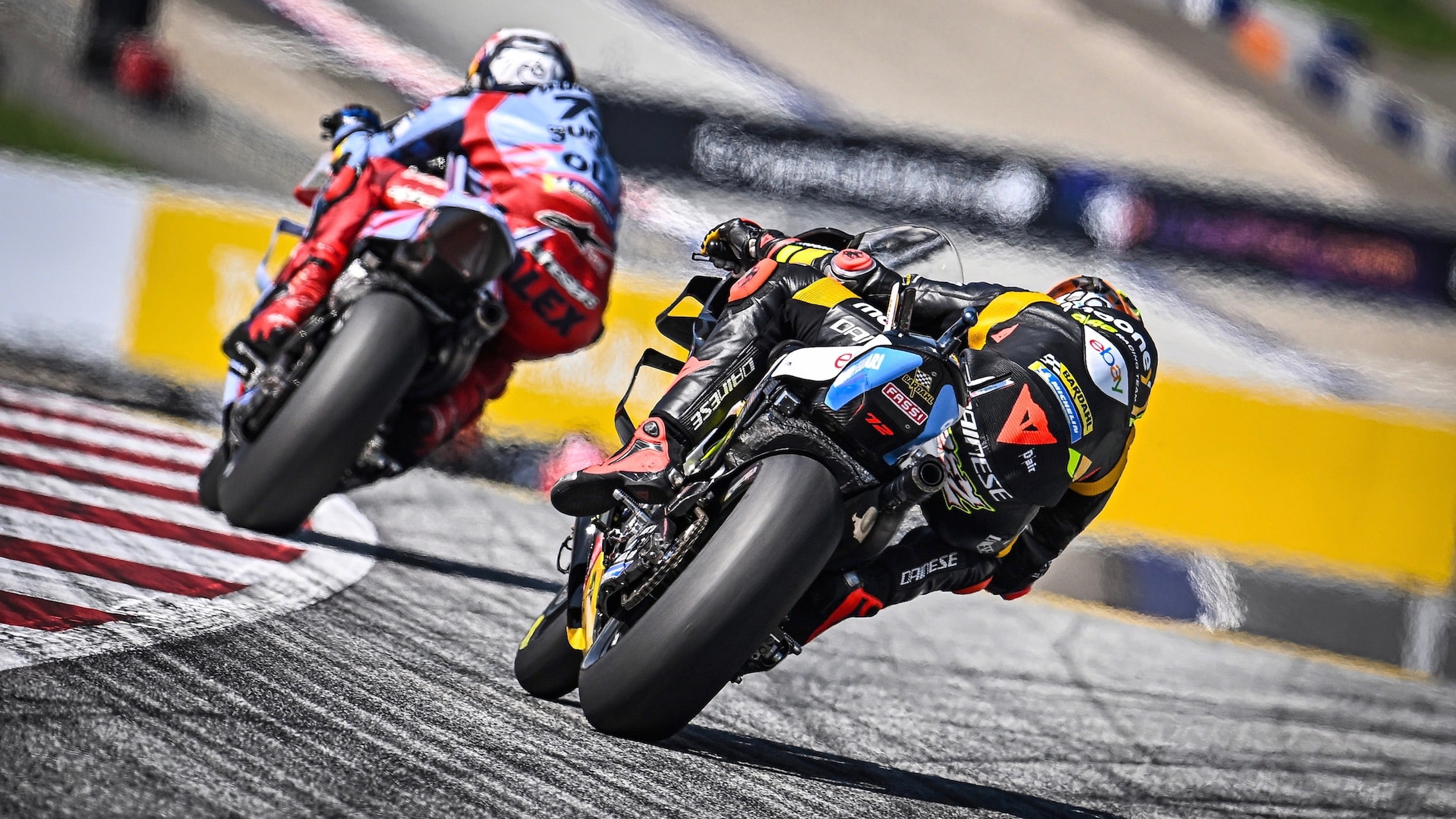
Bezzecchi hunts down Alex Márquez for third place – he struggled to keep his front-tyre pressure under control, so it took a long time to get past
VR46
“As soon as Pecco had a gap my front tyre cooled down a bit, so I felt safe, but by then the rear tyre was in trouble. We are missing grip on the straights, so this harder casing we’ve got here doesn’t work for us at all. When we pick up the bike and start shifting gears we spin a lot. But this weekend I was a second quicker in qualifying than last year, so our bike has made such a huge step forward, so I cannot complain by any means.”
Last weekend was, of course, the first time that MotoGP’s controversial tyre-pressure rules were enforced, requiring riders to keep the front tyre above the 1.88 bar/27.27psi minimum for at least half the race. The problem is that the front tyre offers less grip once it exceeds 2.0 bar/29psi, because the higher pressure changes its profile, reducing its footprint, both in straight braking and while cornering.
